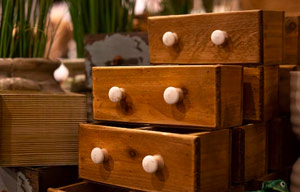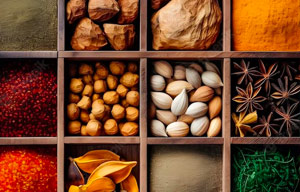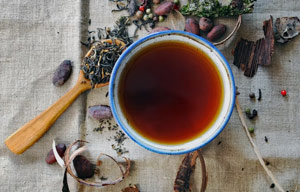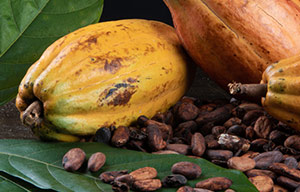1. Kode HS.
Beberapa produk kayu yang diatur (Regulated timber products)
- 4403: Wood in the rough, whether or not stripped of bark or sapwood, or roughly squared
- 4407: Wood sawn or chipped lengthwise, sliced or peeled, whether or not planed, sanded or end‑jointed, of a thickness exceeding 6 mm
- 4408: Sheets for veneering (including those obtained by slicing laminated wood), for plywood or for similar laminated wood and other wood, sawn lengthwise, sliced or peeled, whether or not planed, sanded, spliced or end‑jointed, of a thickness not exceeding 6 mm
- 4409.10.00: Wood (including strips and friezes for parquet flooring, not assembled) continuously shaped (tongued, grooved, rebated, chamfered, v‑jointed, beaded, moulded, rounded or the like) along any of its edges, ends or faces, whether or not planed, sanded or end‑jointed.
- 4409.22.00: Wood (including strips and friezes for parquet flooring, not assembled) continuously shaped (tongued, grooved, rebated, chamfered, v‑jointed, beaded, moulded, rounded or the like) along any of its edges, ends or faces, whether or not planed, sanded or end‑jointed - of tropical wood
- 4409.29.00: Wood (including strips and friezes for parquet flooring, not assembled) continuously shaped (tongued, grooved, rebated, chamfered, v‑jointed, beaded, moulded, rounded or the like) along any of its edges, ends or faces, whether or not planed, sanded or end‑jointed, non‑coniferous—other.
- 4410: Particle board, oriented strand board (osb) and similar board (for example, waferboard) of wood or other ligneous materials, whether or not agglomerated with resins or other organic binding substances
- 4411: Fibreboard of wood or other ligneous materials, whether or not bonded with resins or other organic substances
- 4412: Plywood, veneered panels and similar laminated wood
- 4418: Builders’ joinery and carpentry of wood, including cellular wood panels, assembled flooring panels, shingles and shakes
2. Undang-Undang.
2.1 Biosecurity Act 2015.
Biosecurity Act 2015 beserta seluruh amandemennya merupakan dasar hukum bagi Department of Agriculture, Water and the Environment (DAWE) dalam melakukan perlindungan keamanan hayati di Australia. Undang-undang ini mencakup panduan penanganan resiko keamanan hayati termasuk didalamnya mengatur panduan terkait epidemi dan pandemi. Undang-undang ini dirancang untuk mencegah dan menangani penyakit dan hama yang dapat membahayakan kesehatan manusia, hewan, tumbuhan atau lingkungan hidup di Australia.
Informasi lengkapnya dapat dilihat disini.
2.2 Undang-Undang Penebangan Liar (Illegal Logging Prohibition Act 2012)
Undang-undang ini mengatur tentang impor kayu, pemrodedan, pengawasan, investigasi dan penegakkan aturan.
Informasi selengkapnya dapat dilihat disini.
3. Regulasi.
3.1 Biosecurity Regulation 2016,
Regulasi ini mengatur cara pemenuhan kewajiban keamanan hayati untuk mencegah atau meminimalkan risiko keamanan hayati. Regulasi ini mencakup langkah-langkah pencegahan dan pengendalian materi biosekuritas, penetapan tingkat kontaminan maksimum yang dapat diterima dan, dan penetapan biaya.
Regulasi dapat dilihat disini.
3.2 Reguasi Larangan Pembalakan Liar (The Illegal Logging Prohibition Regulation 2012).
Aturan ini menetapkan langkah-langkah untuk memastikan bahwa kayu tidak diperoleh melalui illegal loging, diantaranya mengatur tentang Kerangka Legalitas Kayu (Timber legality frameworks)
Kerangka Legalitas Kayu (Timber legality frameworks)
Berikut informasi tentang kerangka legalitas kayu:
|
No.
|
Kerangka
|
|---|---|
|
1
|
The Forest Law Enforcement Governance and Trade (FLEGT) licensing scheme for imports of timber into the European Community, administered by the European Commission.
|
|
2
|
Each of the following administered by the Forest Stewardship Council (FSC):
|
|
3
|
Each of the following administered by the Programme for the Endorsement of Forest Certification (PEFC):
|
Regulasi dapat dilihat disini.
3.3 Penebangan Liar (Illegal Loging).
Australia memiliki undang-undang yang ditujukan untuk memerangi penebangan liar dan mempromosikan perdagangan produk kayu yang didapatkan secara legal. Illegal logging dapat didefinisikan sebagai penebangan kayu yang dilakukan tidak sesuai dengan hukum dari negara asal kayu, termasuk hal-hal sebagai berikut:
- Penebangan Kawasan Hutan Lindung atau Spesies yang dilindungi
- Penggunaan metode penebangan ilegal
- Penebangan tanpa izin atau lisensi
- Overcutting
- Menghindari pajak dan royalti.
Aturan terkait Illegal Logging diatur melalui The Illegal Logging Prohibition Regulation 2012 yang menetapkan langkah-langkah untuk memastikan bahwa kayu tersebut tidak diperoleh secara ilegal.
3.4 Persyaratan Uji Tuntas (Due Diligence).
Sistem Uji Tuntas.
Importir disyaratkan memiliki sistem uji tuntas. Uji tuntas tersebut harus:
- tertulis,
- Menggambarkan proses yang sesuai dengan persyaratan uji tuntas,
- Memuat informasi tentang nama perusahaan, alamat perusahaan serta aktifitas usaha; termasuk informasi tentang penanggung jawab (nama, nomor telepon, dan alamat email) yang mengelola sistem uji tuntas, dan
- Dokumentasi tertulis dari sistem uji tuntas.
Persyaratan Uji Tuntas.
Persyaratan uji tuntas terdiri dari:
- Pengumpulan informasi,
- identifying and assessing risk against timber legality framework (optional process)
- identifying and assessing risk against country specific guidelines (optional process)
- risk mitigation
- provision of information to Secretary
3.5 Produk kayu yang dikecualikan (Regulated timber products that are exempt).
Pengecualian prtoduk dari regulasi:
- Produk kayu yang dibuat dari bahan daur ulang.
- Bagian dari produk yang dibuat dari bahan daur ulang.
- Produk kayu sebagai bagian dari pengiriman impor dengan nilai gabungan tidak melebihi AUD. 1000.
Untuk produk kayu yang sebagian dikecualikan—persyaratan uji tuntas tidak diperlukan.
3.6 Pedoman Ekspor Kayu Indonesia (Country specific guidelines Indonesia).
Pedoman khusus negara Indonesia, disahkan bersama oleh Pemerintah Australia dan Pemerintah Indonesia pada 21 Oktober 2014.
Secara umum impor kayu legal dari Indonesia adalah adanya Sertifikat Legalitas Kayu (SVLK).
- Tanyakan apakah eksportir Indonesia memiliki SVLK
- Jika ya, pastikan eksportir Indonesia memberikan Dokumen V-Legal untuk setiap pengiriman.
Beberapa jenis kayu yang dilarang untuk diekspor menurut undang-undang Indonesia:
- 4403: Wood in the rough, whether or not stripped of bark or sapwood, or roughly
squared. - 4404 (exemptions exist): Hoopwood; split poles; piles, pickets and stakes of wood, pointed but not sawn lengthwise; wooden sticks, roughly trimmed, but not turned, bent or otherwise worked, suitable for the manufacture of walking-sticks, umbrellas, tool handles or the like.
- 440:Railway or tramway sleepers (cross-ties) of wood.
4407 (exemptions exist): Wood sawn or chipped lengthwise, sliced or peeled, not planed, not sanded or not end-jointed, of a thickness exceeding 6 mm.
3.7 Ketentuan Impor.
Semua kayu, produk turunan dari kayu, bambu dan produk terkait lainnya (baik untuk penggunaan komersial atau pribadi) harus mematuhi ketentuan impor. Ketentuan impor mencakup persyaratan untuk menunjukkan bahwa risiko hama telah dimitigasi pada saat proses manufaktur atau melalui perlakuan pada kayu sesuai dengan regulasi (approved treatment.)
Ketentuan impor kayu dapat dilihat pada Biosecurity Import Conditions system (BICON) dari Department of Agriculture, Water, and the Environment. BICON merupakan sebuah database yang dirancang untuk membantu importir menemukan ketentuan impor yang harus dipenuhi sebelum impor produk ke Austalia.
Perlakuan pada Kayu (Approved Treatment) terdiri dari:
- Jenis perlakuan
- Penyedia jasa perlakuan kayu
- Bukti telah melakukan treatment
Jenis Perlakuan (Treatment)
Treatment yang diperlukan sebelum melakukan impor akan bergantung pada jenis kayu yang diimpor. Treament yang diperlukan untuk kayu dapat ditemukan pada BICON. Berikut adalah jenis treatment yang mungkin diperlukan (baik seluruhnya atau sebagaian) berdasarkan jenis kayu yang diimpor:
|
Jenis Treatment
|
Deskripsi
|
|
Methyl bromide fumigation
|
Fumigan adalah pestisida dalam bentuk gas. Gas dikeluarkan di dalam kontainer tempat barang dikirim (dalm kondisi tersegel sepenuhnya) atau menggunakan fumigation sheet yang sesuai.
Kedua fumigan ini tidak dapat digunakan untuk produk yang sudah dicat, dipernis atau diglasir karena lapisan tersebut akan menghambat penetrasi fumigant.
|
|
Sulphuryl fluoride fumigation
|
|
|
Ethylene oxide fumigation
|
Produk ditempatkan di ruang vakum kemudian gas diberikan dalam jumlah yang terkontrol.
|
|
Heat treatment
|
Dry or moist heat is applied to a product in a temperature controlled chamber or oven.
For biosecurity purposes timber and wooden related products must achieve a minimum core temperature in order to address biosecurity pest and pathogen concerns. For more information, see the department’s heat treatment standard.
|
|
Kiln drying
|
Pada metode ini, kayu ditempatkan dalam ruangan yang suhu dan kelembabannya dikontrol dengan tujuan mengurangi kadar.
Metode ini dikenal efektif untuk mengurangi serangga, jamur dan hama kayu nematoda.
Untuk tujuan keamanan hayati, suhu yang ditetapkan harus mencapai inti kayu dan durasi treatment disesuaikan dengan ketebalan kayu.
|
|
Immerse in boiling water
|
Perawatan ini hanya berlaku untuk produk bambu, dengan melakukan perendaman dalam air mendidih sesuai durasi yang ditetapkan.
|
|
Cold storage
|
Produk kayu disimpan selama beberapa hari pada suhu dibawah 0o yang telah ditetapkan.
Metode ini tidak dapat digunakan pada produk berasal dari lingkungan yang dingin, dan hanya efektif untuk produk yang diimpor dari negara dengan iklim hangat (zona tropis).
|
|
Ionising radiation (irradiation)
|
Beberapa jenis sinar (contohnya: gamma, x-ray) menghasilkan radiasi elektromagnetik yang dapat menghancurkan sel-sel hidup yang ditemukan pada bakteri dan hama.
Metode ini ini tidak memerlukan penggunaan bahan kimia atau tekanan, serta tidak mengubah suhu produk dan dapat diterapkan pada barang yang dalam kemasan.
|
|
Permanent timber preservative
|
Permanent timber preservative diterapkan pada kayu gergajian, bulat atau veneer melalui penggunaan tekanan atau glueline treatments.
DAWE menerapkan persyaratanyang ketat untuk menggunakan Permanent timber preservative denggan menentukan metode aplikasi digunakan, formulasi kimia, kedalaman penetrasi pengawet dan pengukuran retensi pengawet. Hal ini dilakukan dengan tujuan untuk memastikan bahwa penggunaan metode ini mampu mengatasi masalah biosekuriti secara memadai.
Penjelasan lebih detail tentang metode ini dapat dilihat pada tautan ini.
|
Provider untuk Treatment.
Beberapa treatment (termasuk methyl bromide atau ethylene oxide fumigations, heat treatment, irradiation and cold storage) hanya dapat dilakukan pada treatment providers di luar negeri yang telah ditetapkan atau disahkan melalui sertifikat fitosanitas resmi dari pemerintah. Semntara, treatment lain (seperti sulphuryl fluoride fumigation, kiln drying, immersion in boiling water dan preservative treatments) dapat dilakukan oleh semua provider komersial yang yang mematuhi persyaratan dan dokumentasi yang ditetapkan dalam BICON.
Treatment yang dilakukan setelah produk masuk ke Australia hanya dapat dilakukan pada lokasi yang telah ditetapkan. Lokasi tersebut dikategorikan menurut jenis tindakan yang dilakukan dan kegiatan yang diizinkan untuk dilakukan di fasilitas tersebut.
Daftar lokasi yang telah ditetapkan tersebut dapat dilihat pada tautan ini.
Bukti telah melakukan treatment.
Persyaratan dokumentasi yang dibutuhkan untuk setiap approved treatment dapat dilihat pada BICON. Dokumentasi yang Anda perlukan tergantung pada perawatannya, tetapi dapat mencakup:
- treatment
- sertifikat fitosanitasi resmi dari pemerintah
- pernyaaan dari pabrikan
3.8 Izin Impor.
Selain dengan melakukan treatment sebelum produk dikirim, Permohonan izin impor dapat digunakan untuk melakukan impor produk kayu. Namun akan dilakukan asesmen berdasarkan kasus per kasus dan hanya akan disetujui jika DAWE meyakini bahwa risiko Keamanan hayati akan dimitigasi ke tingkat yang sangat rendah. Permohonan izin impor harus dilengkapi dengan dokumentasi pendukung yang merinci bagaimana treatment akan diterapkan untuk mengelola risiko keamanan hayati.
Permohonan izin impor hanya dapat dilakukan apabila BICON menyatakan bahwa izin impor diperlukan.
3.9 Melaporkan Tanda-Tanda Hama pada Kayu.
Semua individu dalam rantai pasok dan rantai penjualan memiliki peran dalam mengenali dan melaporkan tanda-tanda aktivitas hama pada kayu yang akan diimpor serta produk turunannya, termasuk furniture. Hal ini dikarenakan Ada kemungkinan hama asing yang datang bersama produk masih dalam tahap telur atau larva sehingga tidak dapat terdeteksi hingga muncul serbuk gergaji atau lubang pada produk kayu.
Hal-hal yang perlu diperhatikan antara lain:
- aktivitas serangga atau larva
- suara yang berasal dari kayu
- munculnya lubang secara tiba-tiba
- debu atau serbuk gergaji (frass) yang terus muncul.
Jenis-jenis hama asing yang mungkin dapat terkandung dalam kayu yang diimpor ke Australia dapat dilihat dalam booklet yang dapat diunduh pada tautan tautan ini.
4. Standar.
Standar Grading dan Pengawetan Kayu.
- AS 1080.2.1-1981 Methods of testing timber - Determination of slope of grain by scribe
- AS 1080.2.2-1981 Methods of testing timber - Determination of slope of grain by reference to surface checks
- AS 1080.2.3-1981 Methods of testing timber - Determination of slope of grain by splintering
- AS 1080.2.4-1981 Methods of testing timber - Determination of compound slope of grain
- AS 1080.3-1981 Methods of testing timber - Determination of density
- AS 1123-1972 Preferred metric sizes of wrought ferrous and non-ferrous sheet and strip
- AS 1143-1973 High temperature creosote for the preservation of timber
- AS 2796.3-1999 Timber - Hardwood - Sawn and milled products, Part 3: Timber for furniture components
- AS 2796.3-1999 Rec:2016 Timber - Hardwood - Sawn and milled products - Part 3: Timber for furniture components
- AS 2858-2008 Timber - Softwood - Visually stress-graded for structural purposes
- AS 3519-2005 Timber - Machine proof grading
- AS 3519-2005 Rec:2016 Timber - Machine proof grading
- AS 3818.10-2010 Timber - Heavy structural products - Visually graded, Part 10: Building poles
- AS 3818.2-2010 Timber - Heavy structural products - Visually graded, Part 2: Railway track timbers
- AS 3818.3-2010 Timber - Heavy structural products - Visually graded, Part 3: Piles
- AS 3818.4-2010 Timber - Heavy structural products - Visually graded, Part 4: Cross-arms for overhead lines
- AS 3818.5-2010 Timber - Heavy structural products - Visually graded, Part 5: Mine lift guides
- Standar lainnya dapat dilihat disini.
Standar Pengujian.
- AS/NZS 1080.1:2012: Timber - Methods of test, Method 1: Moisture content
- AS/NZS 1080.2-2006: Timber - Methods of test - Slope of grain
- AS/NZS 1080.3-2000: Timber - Methods of test – Density
- AS/NZS 1604.1:2021: Preservative-treated wood-based products, Part 1: Products and treatment
- AS/NZS 1604.2:2021: Preservative-treated wood-based products, Part 2: Verification requirements
- AS/NZS 1604.3:2021: Preservative-treated wood-based products, Part 3: Test methods
- AS/NZS 1605.1:2018: Methods for sampling and analysing timber preservatives and preservative-treated timber, Part 1: General requirements, sampling, and determination of sapwood and heartwood presence
- AS/NZS 1605.2:2018: Methods for sampling and analysing timber preservatives and preservative-treated timber, Part 2: Determination of preservative penetration by spot tests
- AS/NZS 1605.3:2018: Methods for sampling and analysing timber preservatives and preservative-treated timber, Part 3: Analysis methods for determination of preservative retention
- AS/NZS 1605.4:2018: Methods for sampling and analysing timber preservatives and preservative-treated timber, Part 4: Analysis methods for determination of preservative solution concentration
Standar Panel Berbahan Dasar Kayu, Fibreboard, Particleboard (Standard Wood Based Panels)
- AS/NZS 1859.3:2005/Amdt 1:2009 Reconstituted wood-based panels – Decorative overlaid wood panels
- AS/NZS 4266.31:2004 Reconstituted wood-based panels – Methods of test – Adhesion of paper foils by the crosscut test
- AS/NZS 4266.19:2004 Reconstituted wood-based panels – Methods of test – Assessing appearance of melamine overlaid panels
- AS/NZS 4266.28:2004 Reconstituted wood-based panels – Methods of test – Bond strength of PVC films
- AS/NZS 4266.4:2004 Reconstituted wood-based panels – Methods of test – Density
- AS/NZS 4266.18:1995 Reconstituted wood-based panels – Methods of test – Determination of efficacy of fungicide treatment
- AS/NZS 4266.14:2004 Reconstituted wood-based panels – Methods of test – Dimensional changes associated with changes in relative humidity
- AS/NZS 4266.35:2004 Reconstituted wood-based panels – Methods of test – Dimensions of test pieces
- AS/NZS 4266.2:2004 Reconstituted wood-based panels – Methods of test – Dimensions, squareness, flatness and edge straightness of whole panel
- AS/NZS 4266.16:2004 Reconstituted wood-based panels – Methods of test – Formaldehyde emission – Desiccator method
- AS/NZS 4266.16:2004/Amdt 1:2006 Reconstituted wood-based panels – Methods of test – Formaldehyde emission – Desiccator method
- AS/NZS 4266.0:2004 Reconstituted wood-based panels – Methods of test – General introduction and list of methods
- AS/NZS 4266.29:2004 Reconstituted wood-based panels – Methods of test – Heat resistance of PVC films
- AS/NZS 4266.5:2004 Reconstituted wood-based panels – Methods of test – Modulus of elasticity in bending and bending strength
- AS/NZS 4266.5:2004/Amdt 1:2006 Reconstituted wood-based panels – Methods of test – Modulus of elasticity in bending and bending strength
- AS/NZS 4266.3:2004 Reconstituted wood-based panels – Methods of test – Moisture content
- AS/NZS 4266.30:2004 Reconstituted wood-based panels – Methods of test – Moisture resistance of finished foils
- AS/NZS 4266.11:2004 Reconstituted wood-based panels – Methods of test – Moisture resistance under cyclic test conditions
- AS/NZS 4266.21:2004 Reconstituted wood-based panels – Methods of test – Over-cure or under-cure of resin
- AS/NZS 4266.22:2004 Reconstituted wood-based panels – Methods of test – Porosity of laminated surface
- AS/NZS 4266.22:2004/Amdt 1:2006 Reconstituted wood-based panels – Methods of test – Porosity of laminated surface
- AS/NZS 4266.13:2004 Reconstituted wood-based panels – Methods of test – Resistance to axial withdrawal of screws
- AS/NZS 4266.24:2004 Reconstituted wood-based panels – Methods of test – Resistance to cracking
- AS/NZS 4266.26:2004 Reconstituted wood-based panels – Methods of test – Resistance to dry heat
- AS/NZS 4266.27:2004 Reconstituted wood-based panels – Methods of test – Resistance to impact
- AS/NZS 4266.25:2004 Reconstituted wood-based panels – Methods of test – Resistance to staining
- AS/NZS 4266.23:2004 Reconstituted wood-based panels – Methods of test – Resistance to steam
- AS/NZS 4266.20:2004 Reconstituted wood-based panels – Methods of test – Resistance to surface abrasion (Taber abrasion test)
- AS/NZS 4266.1:2004 Reconstituted wood-based panels – Methods of test – Sampling, cutting, and conditioning of test pieces
- AS/NZS 4266.34:2004 Reconstituted wood-based panels – Methods of test – Surface absorption
- AS/NZS 4266.7:2004 Reconstituted wood-based panels – Methods of test – Surface soundness
- AS/NZS 4266.12:2003 Reconstituted wood-based panels – Methods of test – Surface water absorption
- AS/NZS 4266.8:2004 Reconstituted wood-based panels – Methods of test – Swelling in thickness after immersion in water
- AS/NZS 4266.6:2004 Reconstituted wood-based panels – Methods of test – Tensile strength perpendicular to the plane of the panel (internal bond strength)
- AS/NZS 4266.9:2003 Reconstituted wood-based panels – Methods of test – Thickness stability and glue bond quality
- AS/NZS 4266.9:2003/Amdt 1:2004
Reconstituted wood-based panels – Methods of test – Thickness stability and glue bond quality - AS/NZS 4266.9:2003/Amdt 2:2006 Reconstituted wood-based panels – Methods of test – Thickness stability and glue bond quality
- AS/NZS 4266.33:2004 Reconstituted wood-based panels – Methods of test – Veneer bond durability
- AS/NZS 4266.33:2004/Amdt 1:2006 Reconstituted wood-based panels – Methods of test – Veneer bond durability
- AS/NZS 4266.32:2004 Reconstituted wood-based panels – Methods of test – Veneer bond strength
- AS/NZS 4266.10:2004 Reconstituted wood-based panels – Methods of test – Wet bending strength after immersion in water at 70C or boiling temperature
- AS/NZS 1859.3:2005 Reconstituted wood-based panels – Specifications – Decorative overlaid wood panels
- AS/NZS 1859.2:2004 Reconstituted wood-based panels – Specifications – Dry-processed fibreboard
- AS/NZS 1859.2:2004/Amdt 1:2006 Reconstituted wood-based panels – Specifications – Dry-processed fibreboard
- AS/NZS 1859.2:2004/Amdt 2:2006 Reconstituted wood-based panels – Specifications – Dry-processed fibreboard
- AS/NZS 1859.1:2004 Reconstituted wood-based panels – Specifications – Particleboard
- AS/NZS 1859.1:2004/Amdt 1:2006 Reconstituted wood-based panels – Specifications – Particleboard
- AS/NZS 1859.1:2004/Amdt 2:2011 Reconstituted wood-based panels – Specifications – Particleboard
- AS/NZS 1859.4(Int):2001 Reconstituted wood-based panels – Specifications – Wet-processed fibreboard
- AS/NZS 1859.4:2004 Reconstituted wood-based panels – Specifications – Wet-processed fibreboard
- AS/NZS 1604.2:2010 Specification for preservative treatment – Reconstituted wood-based products
- AS/NZS 1860.1:2002 AMDT 2 Particleboard flooring specifications
Standar Plywood (Kayu Lapis).
- AS/NZS 2754.1(Int):2008 Adhesives for timber and timber products – Adhesives for manufacture of plywood and laminated veneer lumber (LVL)
- AS/NZS 2097:2006: Methods for sampling veneer and plywood
- AS/NZS 2098.3:2006: Methods of test for veneer and plywood – Bond quality and strength of scarf joints in plywood
- AS/NZS 2098.2:2006: Methods of test for veneer and plywood – Bond quality of plywood (chisel test)
- AS/NZS 2098.7:2006 Methods of test for veneer and plywood – Density of veneer and plywood
- AS/NZS 2098.6:2006 Methods of test for veneer and plywood – Depth of peeler checks in veneer and plywood
- AS/NZS 2098.11:2005 Methods of test for veneer and plywood – Determination of formaldehyde emissions for plywood
- AS/NZS 2098.0:2006 Methods of test for veneer and plywood – General introduction and list of methods
- AS/NZS 2098.4:2006 Methods of test for veneer and plywood – Measurement of dimensions and shape for sheets of veneer and plywood
- AS/NZS 2098.1:2006 Methods of test for veneer and plywood – Moisture content of veneer and plywood
- AS/NZS 2098.5:2006 Methods of test for veneer and plywood – Resistance of gluelines in plywood to attack by micro-organisms
- AS/NZS 2098.8:2006 Methods of test for veneer and plywood – Water absorption and thickness swelling of unpainted plywood
- AS 6669-2007 Plywood – Formwork
- AS/NZS 2272:2006 Plywood – Marine
- AS/NZS 2269.2:2007 Plywood – Structural – Determination of structural properties – Evaluation methods
- AS/NZS 2269.1:2008 Plywood – Structural – Determination of structural properties – Test methods
- AS/NZS 2269.0:2008 Plywood – Structural – Specifications
- AS/NZS 2271:2004 Plywood and blockboard for exterior use
- AS/NZS 2271:2004/Amdt 1:2006 Plywood and blockboard for exterior use
- AS/NZS 2270:2006 Plywood and blockboard for interior use
- AS/NZS 2270:2006/Amdt 1:2007 Plywood and blockboard for interior use
- AS/NZS 1604.3:2010 Specification for preservative treatment – Plywood
- ISO 1096:2021: Plywood -- Classification;


